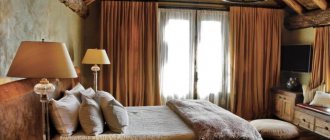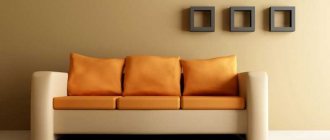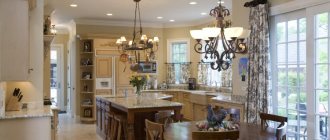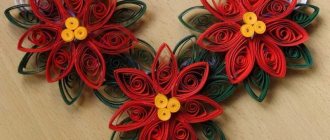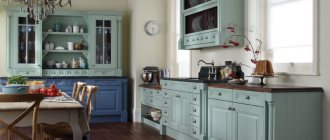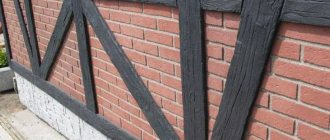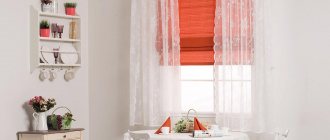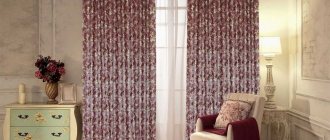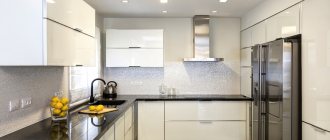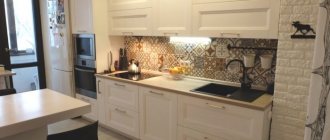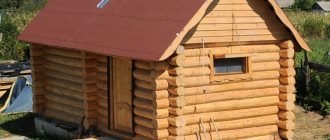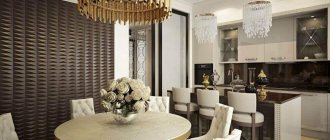With the development of modern technologies, three-dimensional graphics have entered our lives. “Living” drawings began to appear on the asphalt and walls of city houses. Street artists are increasingly surprising with the skill and realism of their pictures. The new trend is reflected in the interior design. We are talking about 3D wallpaper for the floor, which enlivens the room and gives it uniqueness. How such a drawing is created, what kind of interior it is combined with and how much money is needed for it, we will talk in our article.
With the development of modern technologies, three-dimensional graphics have entered our lives.
Features of creating 3D floors using new technology
Modern materials allow you to realize your wildest fantasies in the interior, including the creation of 3D floors using new technology. High-quality work is not only a beautiful, but also a reliable floor.
To create the effect of a three-dimensional image on the floor, you need to prepare a high-quality high-resolution picture or objects that you want to pour into the floor:
- pebbles
- shells
- colored sand
- dried flowers.
The thicker and better quality the top transparent layer is, the more realistic the volume effect will be. The technology itself requires high-quality preparatory work. It includes:
We also recommend reading:
Event decoration: how a holiday is created. What color should the outside of the house be painted? Beautiful decoration for a beautiful celebration: we decorate the wedding hall with our own hands. In which room should I install a clock and a mirror on the wall?
- Preparation of the base. Usually this is a concrete screed. It is important to ensure that the surface is perfectly flat, without cracks or bumps;
- Ensuring maximum removal of dirt, dust and moisture. If this step is skipped, the bulk polymer material will crack;
- Installation of printed designs or decorative items;
- Pouring a polymer transparent coating. The solution must be mixed with a mixer to obtain the most homogeneous mass;
- Applying final protective varnish.
Stage four - finishing of the self-leveling floor
The last stage of designing a 3D self-leveling floor is applying a finishing layer, which will help emphasize the effect of a three-dimensional image and preserve the coating for a long time from scratches, dents, and deformation. To fully comply with the technology you will need:
- using a construction mixer, mix the transparent polymer composition with the solvent in the same proportion as when combining the components of the base layer of the self-leveling floor;
- pour the composition and carefully spread it over the surface with a roller so that the layer thickness does not exceed 0.3 mm;
- The polymerization process will take about 30 minutes, after which it is necessary to coat the self-leveling floor twice with colorless varnish.
You shouldn’t actively use the room immediately after finishing, dragging furniture in there and placing it on the newly made self-leveling floor. We must wait until all layers dry evenly and the polymerization processes are completed, which depends on the temperature and humidity, time of year, and weather. If you managed to make 3D self-leveling floors in your apartment with your own hands in all the rooms, you will have to ask to stay with relatives, friends for one or two weeks, or go to the country. It is better to do the self-leveling floor in stages - first in one room, then in another and so on.
Important! At each stage of working with self-leveling coating, one should not neglect a respirator, gloves and safety glasses, since dispersed dust and vapors of polymer compounds settle on the skin, mucous membrane of the nose and mouth, get into the eyes and throat, causing skin irritation, a feeling of sand in the eyes, runny nose, cough.
The technology for making a self-leveling floor in 3D format with your own hands involves the use of shoes with spikes from the moment the polymer composition is poured until the end of the work.
Characteristics of types of 3D floors
Self-leveling floors differ in the main component of the mixture being poured. The most popular of them:
- Epoxy
- Polyurethane
- Cement-acrylic
In general, all self-leveling floors can be divided into two large groups: one-component and two-component.
One-component polymer floors
This coating is ideal for technical and utility rooms. In this option, a rich color palette is not needed, but the reliable composition, strength and quality of the filling material is important.
Self-leveling floors with the image: fantasy in the interior of rooms
Despite the fact that self-leveling floors with a three-dimensional pattern require significantly more time and financial costs, this technique for decorating rooms wins the hearts of owners of country houses and city apartments. Difficulties in technology and cash injections ultimately pay off with a stunning “wow” effect upon completion of the work.
To choose the right pattern to implement it in the interior, you need to pay attention to such points as:
- Personal preferences and functionality of the room. If you adore seascapes, sea pebbles and the look of waves, you don’t need to fill such a floor in the bedroom; rather, it would be suitable for the bathroom;
- Psychological message of the image. Too aggressive pictures and drawings with a creepy plot will not have a positive effect on your well-being and condition.
- Failure effect. The illusory picture of a hole in the floor (deep cliff or cracks) has an alarming effect on the psyche. A person perceives the earth as something stable, and by violating this feeling, one can end up with the opposite effect.
The process of selecting and installing 3D floors with images must be approached seriously and responsibly. If you are not confident in your abilities, it is better to turn to specialists. The designer's vision and experience in carrying out such work will guarantee the embodiment of fantasy in the interior, which will delight the eye for many years.
Gallery: 3D floors (53 photos)
How much do 3D floors cost?
Be prepared that the cost of 3D floors differs significantly from other coatings by 5-10 times. The price per 1 sq.m will vary depending on many factors:
- Selection of building mixtures. We have already mentioned that polymer poured floors come in several types and manufacturers. The better and more durable the material, the more it will cost;
- Print the image. The design can be printed on banner fabric or vinyl film, and there is also the option of applying the image directly to the base using acrylic paints;
- Do not forget that installation of a three-dimensional image involves extensive work on major repairs of the base itself , and this also “eats up” a lot of money.
The price is also influenced by factors such as the total area of the floor covering, the technique of applying the pattern, the professionalism and experience of the company. On average, the cost of covering an area of 15 sq.m in Moscow costs $200-$250. In the regions, the price ranges from $8 to $10 per 1 sq.m.
How to make a 3D floor with your own hands: step-by-step instructions
After I cleared the area for the future floor, removed all the furniture from the room (some of it had to be disassembled first), removed several plaster bas-reliefs and a small mirror from the walls, it was time to start installing the floor.
Anton Makarov
Expert of our site. She has been selling and installing floor coverings for over 7 years. Can give really valuable advice.
Ask a Question
The installation of self-leveling floors must be carried out in stages. For each stage, prepare materials and tools in advance. All of them must be accessible, the path to them must not be blocked.
The technology for manufacturing 3D floors includes preparing the floor for the base layer. If the previous floors in the room were uneven, creaked, or damaged in many places, feel free to remove them. Same as me. Otherwise, it will be impossible to achieve a smooth surface of the screed. Then the drawing may be broken.
Interesting article on the topic: How to fill a self-leveling floor with your own hands
Align the base layer
Various surfaces are suitable for installing a floor with a 3D effect: wooden floorboards, ceramic tiles, concrete. Wait a while after the screed is laid. Seal cracks with cement, a special primer or epoxy filler.
Preparing the surface
Prime the surface
Using a grinder or concrete grinder, remove even minor bumps. After this, take a break from work for about a month. I am not kidding. This is exactly how long it will take for the base layer and screed to dry. The quality of the new floor covering depends on the exposure.
Apply the first polymer layer and image
For this layer, which is considered the base layer, you need to choose a color or shade so that the image looks as impressive as possible.
Apply the first layer
Apply the image to the prepared surface. Become a decorator - paint a picture or patterns using paints. Or invite an artist. You can also secure the finished drawing using a self-adhesive base. It can be made on banner fabric, vinyl film or satin.
Applying the image
Anton Makarov
Expert of our site. She has been selling and installing floor coverings for over 7 years. Can give really valuable advice.
Ask a Question
Sometimes a complete image has to be composed of several fragments. Join them as carefully as possible so that the overall perception is not disturbed.
Apply the finishing coat
This is the case when the quality of all work done depends on the accuracy of execution. I advise you to choose epoxy resin as the final layer. Do not forget about safety precautions when working with this substance.
Pour the finishing coat
Make sure you wear appropriate work clothing. Calculate the thickness of the layer based on the characteristics of the room and its purpose. Professionals can achieve uniform coverage ranging from 1.5mm to 5mm. Well, for me, an amateur, it was easiest to work on a 3 mm layer.
Interesting article on the topic: What is an epoxy self-leveling floor?
Sand and varnish
If you leave the self-leveling floor without final processing, the effect of the depth of the image will be somewhat blurred. Believe me, you are not the only one who wants to complete all the work in a short time.
I, too, was a little exhausted when approaching this stage, and my excitement had already diminished. Do the final treatment, apply a high-quality wear-resistant varnish. This will extend the performance of the floor, and therefore its service life.
Materials for 3D floors
There are many high-quality compositions on store shelves for the manufacture of seamless self-leveling coatings. Using epoxy primer you will strengthen the concrete and improve adhesion to the surface of the colored layer. The putty will remove all cracks, pits and other irregularities.
- A mixture of colored resin and hardener is the base layer. Don’t forget, they are mixed with a mixer and then evenly distributed over the primed base.
- It is advantageous to use epoxy enamel to reduce the cost of flooring. Its layer should be very thin, approximately 0.3 mm.
- You can choose the print with the image yourself. And then order it to be transferred to fabric or a banner at a printing house.
- The final transparent layer serves as the adhesive base for the design, as well as the material with which it is coated.
The self-leveling floor needs protection. Several times during the year it should be coated with mastic or polish, the grades of which are selected in accordance with the characteristics of the coating.
Viewed times: 2,091
Great article 1
Author's rating
Author of the article
Oleg Grishin
Flooring specialist with 10 years of experience. Oleg has something to share with our readers
Articles written
105
- Even more interesting:
- What is an epoxy self-leveling floor?
- Self-leveling floors - types and characteristics
- How to fill a self-leveling floor with your own hands
Self-leveling 3D floors with images in the interior
To create 3D floors, you can use almost any image that inspires you, calms you, or makes you smile. But it is important to remember that such a coating is durable, so you should not obey momentary desires or fashion trends. Such drawings will soon become a thing of the past, and you will be admiring the floor for several years to come. Designers recommend choosing neutral, classic motifs: nature, seascape, space themes or the animal world.
Designer 3D floors in the bathroom
For bathrooms, polyurethane poured flooring is best because you end up with a thin, but very durable and beautiful finishing layer. Moreover, in this option you can choose the surface texture, glossy or matte. Experts recommend the optimal coating thickness in the bathroom is 1.5 mm.
The benefits of grouting bathroom floors are obvious. It has no seams, which means no floods are scary for you or your neighbors below. The poured floor is easy to clean, strong and durable. In addition, mold and other bacteria that love moisture do not form on it.
The most common design solution in the design of 3D floors in the bathroom is a marine theme. Pebbles with a rolling wave, cute and friendly dolphins, a bright bottom with colorful fish, starfish and shells.
Designer 3D floors in the bathroom
3D floors with images in the bedroom
Using 3D floors in the bedroom allows you to make the room stylish, fashionable and different. You don’t have to limit your imagination, because you can print almost any photo you like in good quality on a plotter. Since a poured floor with a three-dimensional image is already a work of art in itself, make sure that the rest of the interior does not argue with the main motif, but complements it with accessories and a color palette.
Selecting a floor pattern
Step-by-step instructions for creating a floor covering with your own hands (video) will help you create a unique pattern on the floor. The first thing to do is choose an original image for it.
USEFUL INFORMATION: Repairing cracks and potholes in concrete floors
- An actual solution for the living room could be an image of a city square or a meadow of flowers.
- The decoration of the kitchen can be a plain floor, variations with images of wildlife or geometric shapes.
- It is better to decorate the floor in the bathroom with images of the corresponding theme - the water world and everything connected with it will fit perfectly into the overall style.
- A suitable pattern for the bedroom floor can be a famous painting or a simple but unique ornament.
- There are a huge number of options for decorating the floor of a children's room, the most popular are cartoon characters, drawings on space themes, sports themes and others.
